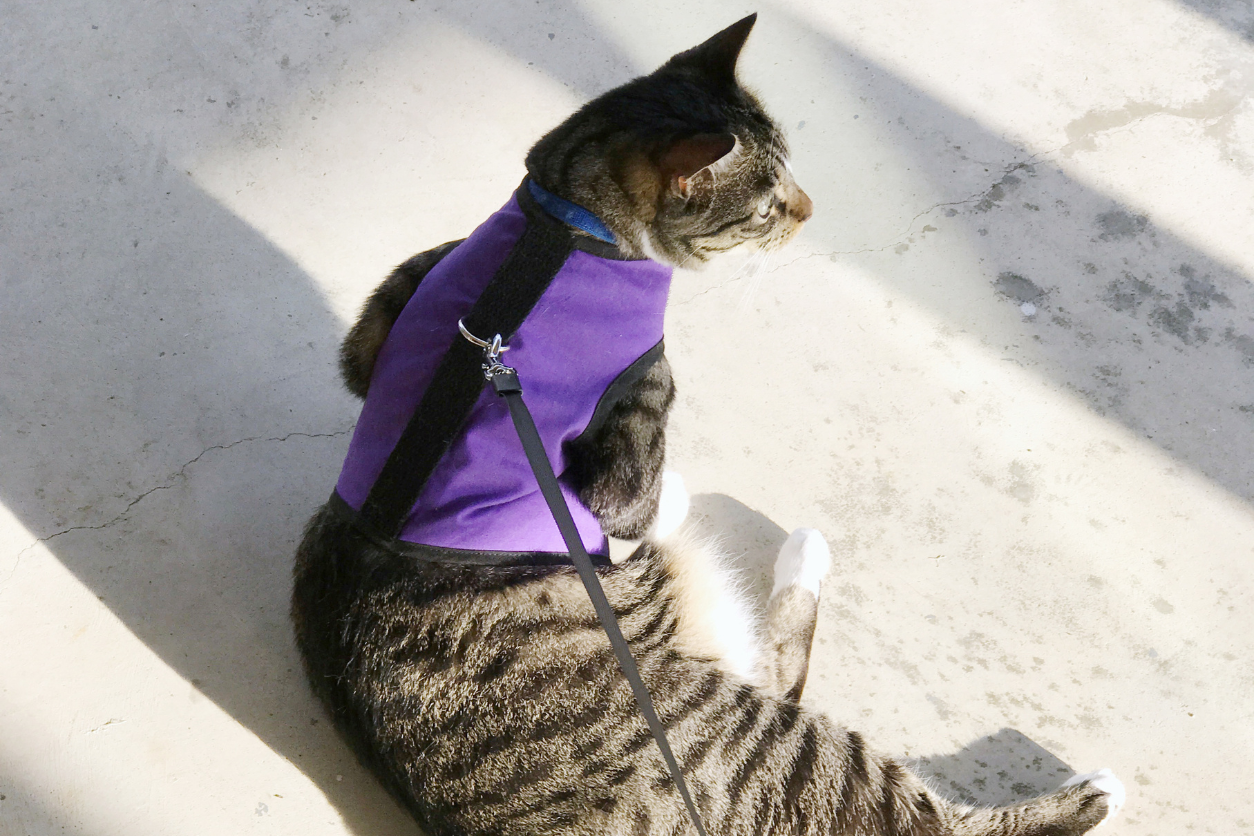How to Harness Train a Cat in 5 Easy Steps

If you’ve ever dreamt of taking your feline friend on outdoor adventures, but the thought of a runaway cat sends chills down your spine, harness training may be the solution. Ok that might sound a bit too dramatic. What I mean to say is that it’s definitely possible to train your cat to happily walk on a leash (keyword: happily!), just like those adorable dogs strolling around the park.
In this article, we will guide you through harness training your cat in five easy steps, ensuring a safe and enjoyable experience for you and your feline companion. With the right training, you’ll be able to go on vacations, walks, and errands with your furry friend by your side.
The Basics of Harness Training a Cat
Harness training your cat can provide numerous benefits for you and your furry friend. By teaching your cat to walk on a harness, you can provide them with exercise, mental stimulation, and the opportunity to explore the outdoors in a safe and controlled manner.
Starting harness training when your cat is young is ideal, as they tend to be more adaptable and open to new experiences. However, adult cats can also be successfully harnessed and trained with patience and consistency.
Choosing the right cat harness is crucial to ensure their comfort and safety. Look for a harness designed for cats, as it should fit securely without restricting their movement or causing discomfort. Avoid using harnesses meant for dogs, as they may not fit properly and could harm your cat.
Step 1: Indoor Harness Wearing
When putting the harness on your cat, do it calmly and gently. Start by opening the harness, placing it over your cat’s back, and securing the buckles or fastenings. Ensure the harness fits snugly but not too tight, allowing for comfortable movement.
During the initial indoor harness-wearing sessions, it’s important to supervise your cat to ensure their safety and comfort closely. Keep an eye on their behavior and body language, and be ready to remove the harness if they display signs of distress.
Encourage your cat to move around while wearing the harness by offering treats or engaging them in play. This will help them associate the harness with positive experiences and gradually build their confidence.
Step 2: Getting Used to The Leash
Once your cat is comfortable wearing the harness indoors, it’s time to introduce the leash. Start by showing them the leash and allowing them to sniff and investigate it. This will help familiarize them with the leash and reduce any potential fear or anxiety.
Attach the leash to the harness, ensuring it’s securely fastened. Give your cat time to adjust to the added sensation of the leash before attempting any outdoor walks.
During your cat’s first experiences with the leash, closely supervise their behavior and movements. Allow them to explore their surroundings at their own pace, and be ready to provide reassurance or redirect their attention if needed.
Step 3: Indoor Leash Walking
Once your cat is comfortable with the leash, it’s time to start indoor leash walking. Begin by gently guiding your cat using the leash, encouraging them to move forward. Avoid pulling on the leash or forcing your cat to follow your lead, as this can negatively affect leash walking.
Instead, use positive reinforcement techniques such as treats or praise to reward your cat for walking alongside you. Allow them to explore their surroundings within the confines of your home, focusing on creating a positive and enjoyable experience.
Reward your cat’s progress during each indoor leash walking session, gradually increasing the duration and distance covered. This will help build their confidence and reinforce the positive association with leash walking.
Step 4: Short Outdoor Excursions
Before venturing outdoors, ensure your cat is comfortable and confident with indoor leash walking. Prepare for the first outdoor session by choosing a calm and safe environment away from busy roads or other potential hazards.
When taking your cat outdoors for the first time, keep the sessions short and gradually increase their duration. Allow your cat to explore their surroundings at their own pace, providing guidance and encouragement as needed.
Monitor your cat’s reactions to outdoor elements such as new sounds, smells, or other animals. If your cat shows fear or anxiety, reassure and consider returning indoors. Prioritizing your cat’s comfort and safety during outdoor excursions is important.
Step 5: Longer Outdoor Walks
As your cat becomes more comfortable with outdoor walks, gradually extend the duration of each session. This will allow them to explore their surroundings more extensively and enjoy the benefits of outdoor stimulation and exercise.
Expose your cat to different outdoor scenarios, such as encountering other animals or unfamiliar noises. This will help them become more adaptable and confident in various environments.
Ensure your cat’s safety during outdoor walks by keeping them on a secure leash, avoiding busy roads, and being mindful of potential hazards. Regularly check the fit and condition of the harness and leash to ensure they remain secure and intact.
Final Thoughts
By following the five easy steps outlined in this article, you can successfully harness train your cat, allowing them to enjoy the great outdoors in a safe and controlled manner. Harness training your cat is not only possible, but it can also be a fulfilling and rewarding experience for both you and your feline companion. Start your journey today and enjoy the wonders of the great outdoors with your furry friend.
Your Pet’s Best Interest, Always
At Pet Institute, we take pet care seriously. We're dedicated to transparency, impartiality, and the well-being of your pets in every article, review, and recommendation we provide. Our unwavering commitment to these principles ensures that you, our valued reader, always receive reliable and unbiased information. Let us be your trusted guide in the world of pet care and companionship.